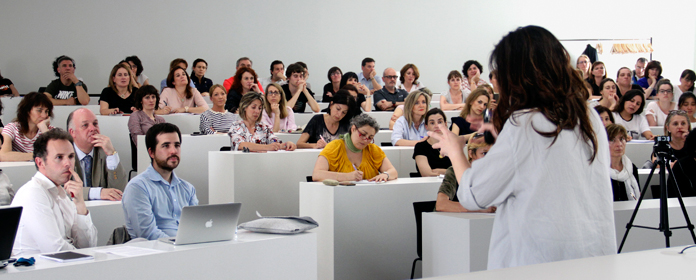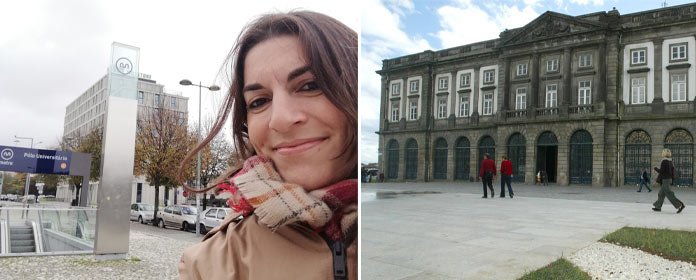A conference at the University of Navarra presents technological solutions to stem dyslexia in children
During the conference, more than 40 children tested a video game that seeks to improve the reading ability of children with dyslexia

FOTO: Natalia Rouzaut
The Institute for Culture and Society (ICS) of the University of Navarra hosted a conference on Technological Tools against Dyslexia on Friday, June 8 in collaboration with DISNAVARRA. The event took place because of Miguel Ostiz’s research, who is doing his doctoral thesis with the ICS’s Mind-Brain Group, the Basque Center on Cognition Brain and Language (BCBL) and the University of Vic.
The conference was divided into three activities: A talk for parents of children with dyslexia by Ostiz and Luz Rello, a researcher at Carnegie Mellon University (USA); a craft workshop for the more than 40 children who attended the event; and a test of a video game developed by the doctoral student to help improve the reading ability of children with dyslexia.
During his presentation, Ostiz explained how the game works to parents. It is called Jellys and seeks to improve visual attention and rhythm. "The idea is to train other cognitive skills that can impact reading," he says. Thus, children improve their reading ability indirectly and while having fun.
For her part, Luz Rello spoke about her research to stem dyslexia, in which she analyzes "the types of errors that people with dyslexia make and how they process a text based on the number of errors," she explains. The researcher, who is also the founder of the Change Dyslexia association, tries to detect this disorder and the strengths and weaknesses that each child presents.
Artificial intelligence and dyslexiaDuring the testing of the game, children were asked to perform activities based on rhythm and visual attention. For example, they had to catch jellys, which are creatures designed by Ostiz himself, to the rhythm of different contemporary songs. Afterwards, children were asked to offer their opinion of the game. According to the researcher, this allows them to test the "game’s usability," helping him to make it as comprehensible as possible before its final implementation in the Santa Teresa School in Pamplona next academic year (2018-2019).
For the development of this videogame, the doctoral student conducted a research stay at Carnegie Mellon University’s Human-Computer Interaction Institute. There, he received guidance from Luz Rello, who has developed tools such as Dytective, which allows for the detection of dyslexia, or DytectiveU that "analyzes different cognitive skills to find strengths and weaknesses and offer personalized training," Ostiz notes.
His research stay is possible thanks to two grants from the Banco Sabadell Foundation and the Caja Navarra Foundation, in addition to a grant from the La Caixa Obra Social Fund that finances his thesis project.




